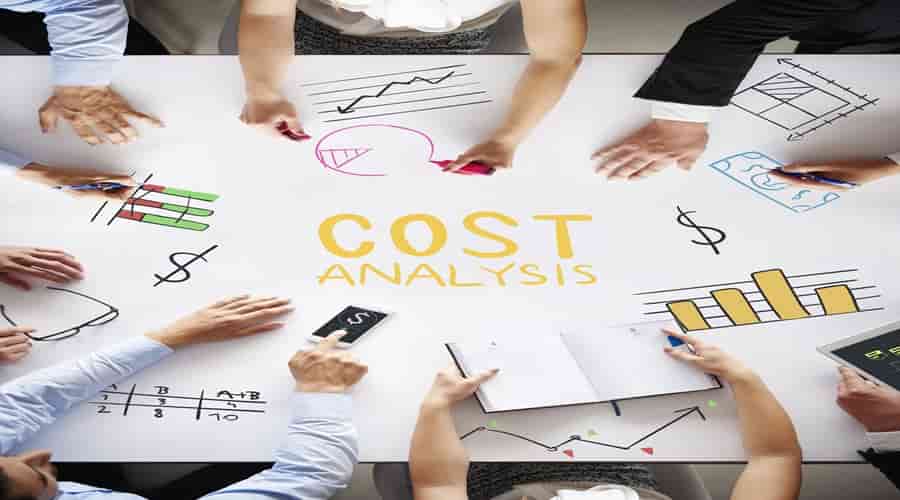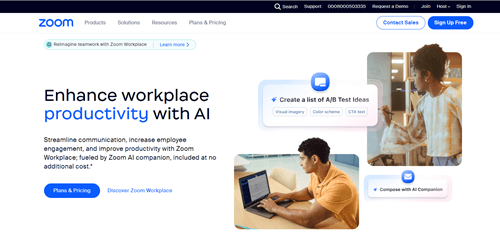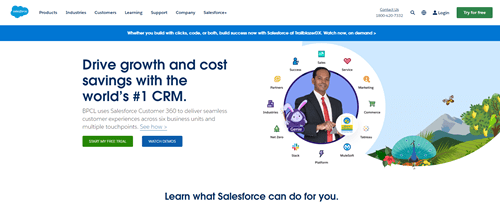
Unlocking Success: Mastering CAC in SAAS Business
In the dynamic and competitive world of Software as a Service (SaaS), one metric stands out as a critical indicator of business health and growth potential: Customer Acquisition Cost (CAC). This metric represents the resources and investments required to acquire new customers, making it a pivotal factor in determining a SaaS business model’s long-term viability and profitability. Mastering CAC is essential for SaaS companies aiming to accelerate growth, optimize resource allocation, and maintain a sustainable competitive edge.
Understanding Software as a Service (SaaS):
Software as a Service (SaaS) is a software delivery model where applications are hosted and managed by a third-party provider in the cloud. Instead of purchasing and installing software on local devices or servers, users use a subscription-based pricing model to access SaaS applications over the Internet. This model has revolutionized how businesses consume and utilize software, enabling greater flexibility, scalability, and cost-effectiveness.
Importance of CAC in SaaS Business Models:
CAC plays a pivotal role in the SaaS industry, where customer acquisition and retention are critical drivers of success. A well-managed CAC impacts profitability and influences key metrics such as customer lifetime value (CLV), payback period, and overall business sustainability. By optimizing CAC, SaaS companies can:
Improve operational efficiency and resource allocation:
Streamline internal processes and workflows to eliminate bottlenecks and reduce inefficiencies.
Implement data-driven decision-making to identify areas of resource wastage and optimize resource allocation accordingly.
Enhance customer acquisition strategies and marketing effectiveness:
Conduct a thorough analysis of customer acquisition channels to identify which ones yield the highest quality leads and conversion rates.
Develop personalized marketing campaigns based on customer segmentation and behavioral analysis to improve targeting and engagement.
Increase customer lifetime value and long-term profitability:
Implement strategies to increase customer retention through improved customer experience, proactive customer support, and loyalty programs.
Upsell and cross-sell additional products or services to existing customers to maximize their lifetime value and increase revenue streams.
Gain a competitive edge in the market:
Invest in continuous innovation and product development to stay ahead of competitors and meet evolving customer needs.
Differentiate the brand through unique value propositions, superior customer service, and a strong focus on building customer relationships.
Factors Influencing CAC in SaaS:
Several factors contribute to the Customer Acquisition Cost in the SaaS industry, including:
Marketing and advertising expenses:
Investments in various marketing channels such as online advertising, content marketing, social media campaigns, and search engine optimization (SEO) impact CAC. The effectiveness of these marketing efforts in attracting and converting leads directly influences the overall cost of customer acquisition.
Sales and customer acquisition efforts:
Costs associated with sales teams, including salaries, commissions, training, and tools, contribute significantly to CAC. The efficiency and effectiveness of sales processes lead to nurturing strategies, and conversion rates affect the cost of acquiring new customers.
Customer onboarding and support costs:
Providing effective onboarding processes and ongoing customer support services incur costs that contribute to CAC. Investments in resources, training, software tools, and infrastructure to ensure smooth onboarding and excellent customer experiences impact the overall cost of acquiring and retaining customers.
Product development and enhancements:
Continuous development and enhancement of SaaS products to meet customer needs and stay competitive require investments that influence CAC. Research and development costs and expenses related to product improvements, updates, and feature enhancements contribute to the overall cost of acquiring and retaining customers.
Market competition and pricing strategies:
The level of competition in the SaaS market and the pricing strategies adopted by competitors influence CAC. High competition may require higher marketing and sales expenses to differentiate the product and attract customers. Pricing strategies, such as discounts, free trials, or freemium models, also affect the cost of acquiring and retaining new customers. Adjusting pricing strategies based on market dynamics and competitor actions can significantly impact CAC.
Calculating and Measuring CAC:
To effectively manage Customer Acquisition Cost (CAC), SaaS companies must calculate and measure this metric accurately. The most common formula for calculating CAC is:
CAC = Total Sales and Marketing Costs / Number of New Customers Acquired
This formula helps determine the average cost required to acquire a new customer. It considers all expenses related to sales and marketing efforts over a specific period, divided by the number of new custmers acquired during that period.
It’s important to note that CAC should be evaluated with other key metrics, such as customer lifetime value (CLV) and customer churn rate, to comprehensively understand business performance and profitability. By analyzing CAC alongside CLV, companies can assess the efficiency of their customer acquisition efforts relative to the value those customers bring over their lifetime. Additionally, monitoring customer churn rate helps identify potential issues in customer retention, which can impact the overall effectiveness of customer acquisition strategies.
By measuring and analyzing these metrics collectively, SaaS companies can make informed decisions to optimize customer acquisition processes, improve overall business performance, and maximize profitability.
Strategies to Optimize CAC in SaaS:
Optimizing CAC requires a multifaceted approach, and SaaS companies can implement the following strategies:
Refine targeting and lead generation efforts:
Conduct thorough market research to identify target customer segments with the highest potential for conversion.
Utilize data-driven insights to refine targeting criteria and tailor marketing campaigns to specific audience demographics and preferences.
Employ advanced targeting techniques like lookalike audience modeling and behavioral targeting to reach prospects most likely to convert.
Leverage content marketing and inbound strategies:
Develop high-quality content that addresses the pain points and challenges of target customers.
Distribute content through various channels to attract and engage prospects, including blogs, social media, email newsletters, and industry publications.
Implement lead capture mechanisms, such as gated content and email opt-ins, to capture and nurture leads through the sales funnel.
Optimize conversion rates and sales processes:
Conduct A/B testing and optimization experiments to identify and eliminate barriers to conversion in the sales funnel.
Streamline the sales process to reduce friction and make it easier for prospects to convert.
Provide sales teams with the necessary training, tools, and resources to engage and convert leads into customers effectively.
Implement effective customer onboarding and success initiatives:
Design a seamless onboarding experience that guides new customers through the setup process and demonstrates the product’s value.
Provide ongoing support and resources to help customers maximize the use of the product and achieve their desired outcomes.
Proactively engage with customers to address issues or concerns and ensure a positive experience throughout their lifecycle.
Continuously monitor and analyze CAC metrics:
Establish key performance indicators (KPIs) to track CAC, such as CAC ratio (CAC to CLV ratio), payback period, and customer acquisition efficiency.
Regularly review and analyze CAC metrics to identify trends, patterns, and areas for improvement.
Use insights from CAC analysis to make data-driven decisions and adjust marketing and sales strategies accordingly.
The CAC-CLV Relationship: Balancing Acquisition and Retention
One of the most critical aspects of Customer Acquisition Cost (CAC) management in the Software as a Service (SaaS) industry is its relationship with Customer Lifetime Value (CLV). CLV represents a customer’s projected revenue throughout their relationship with the company, considering factors such as subscription fees, upsells, and customer retention.
Striking the right balance between CAC and CLV is crucial for SaaS businesses to achieve long-term profitability and sustainable growth. A high CAC combined with a low CLV can lead to an unsustainable business model, as the costs of acquiring new customers outweigh their revenue. Conversely, a low CAC and a high CLV indicate a healthy and profitable business model.
To optimize this relationship, SaaS companies should focus on strategies that not only reduce CAC but also increase CLV, such as:
Improving customer onboarding and adoption processes:
Streamlining the onboarding process to help customers get started quickly and easily.
Providing comprehensive training and support to ensure customers fully understand the product’s value proposition.
Enhancing product value and customer experience:
We continuously update and improve the product to meet evolving customer needs and preferences.
We are soliciting customer feedback and using it to make informed decisions about product enhancements.
Implementing effective customer success and retention initiatives:
Proactively engaging with customers to understand their goals and challenges.
We provide personalized support and resources to help customers succeed with the product.
Offering upsell and cross-sell opportunities:
We are identifying opportunities to upsell customers to higher-tier plans or additional features.
I recommend complementary products or services that align with customers’ needs and interests.
Fostering customer advocacy and referral programs:
Encouraging satisfied customers to share their positive experiences with others.
We are incentivizing referrals and rewarding customers for bringing in new business.
Case Studies: Successful CAC Management in SaaS Companies:
Several Software as a Service (SaaS) companies have achieved remarkable success in managing and optimizing their Customer Acquisition Cost (CAC), driving sustainable growth and profitability:
HubSpot:

HubSpot has distinguished itself by focusing on inbound marketing and content strategies.
By creating valuable content that attracts and engages potential customers, HubSpot has maintained a low CAC over time.
Their emphasis on providing educational resources, such as blogs, webinars, and guides, has helped acquire new customers, nurture leads, and convert them into paying customers.
This approach has enabled HubSpot to grow rapidly and gain a competitive edge in marketing automation.
Slack:

Slack’s success in managing CAC can be attributed to its emphasis on product-led growth and viral marketing tactics.
The intuitive and user-friendly design of Slack’s collaboration software has led to high user adoption rates and organic growth through word-of-mouth referrals.
By offering a freemium model that allows users to experience the product’s value before upgrading to premium plans, Slack has effectively reduced its CAC.
Additionally, features like integrations with other popular tools and platforms have further incentivized adoption and contributed to lower acquisition costs.
This strategic focus on product-led growth has enabled Slack to scale efficiently and capture a significant market share in the collaboration software segment.
Zoom:

Zoom’s success in managing CAC stems from its focus on providing a reliable, user-friendly video conferencing platform.
By offering a freemium model with limited features, Zoom attracts a large user base and encourages organic growth through positive user experiences.
The platform’s simplicity and accessibility across various devices have contributed to high user adoption rates and low acquisition costs.
Additionally, strategic partnerships with hardware manufacturers and integration with popular productivity tools have expanded Zoom’s reach and reduced CAC.
Salesforce:

Salesforce, a pioneer in cloud-based customer relationship management (CRM) software, has successfully managed CAC through inbound marketing and customer-centric strategies.
By positioning itself as a thought leader in the CRM space and providing valuable educational resources, such as webinars, whitepapers, and community forums, Salesforce attracts qualified leads and nurtures them through the sales funnel.
Salesforce’s focus on customer success and satisfaction has resulted in high customer retention rates and increased lifetime value, offsetting the initial acquisition costs.
Additionally, innovative pricing models, such as pay-as-you-go and scalable subscription plans, provide flexibility for customers and contribute to lower acquisition costs.
Netflix:

Netflix’s effective management of CAC is evident in its ability to acquire and retain subscribers in the highly competitive streaming industry.
By investing heavily in original content production and licensing agreements, Netflix offers a diverse and compelling library of movies and TV shows that appeal to a wide audience.
The platform’s personalized recommendation algorithms and user-friendly interface enhance the viewing experience and encourage subscriber retention.
Furthermore, Netflix’s global expansion strategy and localized content offerings cater to diverse markets, driving subscriber growth and reducing acquisition costs per user.
Future Trends in CAC for the SaaS Industry:
As the Software as a Service (SaaS) industry continues to evolve, several trends are expected to shape the future of Customer Acquisition Cost (CAC) management:
Increased adoption of AI and machine learning for lead scoring and personalization:
SaaS companies will likely leverage AI and machine learning algorithms to analyze customer data and identify high-potential leads.
By automating lead scoring processes and personalizing marketing campaigns, companies can optimize CAC by focusing resources on prospects with the highest likelihood of conversion.
Emphasis on product-led growth and freemium models:
The trend towards product-led growth is expected to continue, with more SaaS companies adopting freemium models and offering free limited-feature versions of their products.
Freemium models lower the entry barrier for potential customers and facilitate viral growth through word-of-mouth referrals, ultimately reducing CAC.
Integration of CAC metrics with customer success and retention strategies:
SaaS companies will increasingly integrate CAC metrics with customer success and retention strategies to improve overall business performance.
By understanding the relationship between acquisition costs and customer lifetime value, companies can implement targeted retention initiatives to maximize the value of acquired customers and reduce churn rates.
Emergence of new marketing channels and strategies (e.g., influencer marketing, social media advertising):
As traditional marketing channels become saturated, SaaS companies will explore new avenues, such as influencer marketing and social media advertising, to reach their target audiences.
Leveraging influencers and engaging with customers on social media platforms can help companies reduce CAC by directly connecting with prospects authentically and engagingly.
Greater focus on customer experience and advocacy to drive organic growth:
SaaS companies will prioritize delivering exceptional customer experiences and fostering customer advocacy to drive organic growth and reduce dependency on paid acquisition channels.
Happy and satisfied customers will likely be able to buy the product through word-of-mouth referrals and positive reviews and by lowering CAC.
Aligning CAC with Sales and Marketing Strategies
Effective CAC management requires close alignment between a SaaS organization’s sales, marketing, and customer success teams. By collaborating and sharing insights, these teams can optimize their strategies and tactics to drive customer acquisition while maintaining a sustainable CAC.
Some key areas of alignment include:
Lead generation and nurturing processes:
Sales, marketing, and customer success teams should work together to identify and prioritize high-quality leads.
Marketing can provide valuable insights into lead behavior and engagement, helping sales teams tailor their outreach efforts for maximum effectiveness.
Customer success teams can contribute by identifying opportunities to upsell or cross-sell to existing customers, further optimizing CAC.
Content marketing and inbound strategies:
Collaborating on content creation and distribution allows teams to align messaging and ensure consistency across all touchpoints.
Marketing can leverage insights from sales and customer success teams to create content that addresses common pain points and objections, attracting qualified leads.
Sales and customer success teams can use content to nurture leads through the sales funnel and provide valuable resources to customers at every stage of their journey.
Sales enablement and conversion optimization:
Marketing can provide data-driven insights into which marketing channels and tactics are most effective at driving conversions and informing sales strategies.
Customer success teams can contribute by sharing customer feedback and success stories that sales teams can use to build credibility and trust with prospects.
Customer onboarding and adoption initiatives:
Sales and customer success teams should collaborate to ensure a smooth transition for new customers from the sales process to onboarding.
Marketing can provide educational resources and materials to help customers get the most out of the product during onboarding.
Customer success teams can continue to engage with customers post-onboarding, providing ongoing support and guidance to drive product adoption and retention.
Customer feedback loops and product roadmap alignment:
Establishing regular communication channels for sharing customer feedback allows teams to identify areas for improvement and align product development efforts with customer needs.
Marketing can use customer feedback to inform messaging and positioning, ensuring marketing materials resonate with target audiences.
Sales and customer success teams can leverage customer feedback to address objections and concerns during the sales process and provide tailored solutions to meet customer needs.
FAQs:
How does CAC differ from customer acquisition costs?
CAC is a broader term encompassing all costs of acquiring new customers, including marketing, sales, and onboarding expenses.
Is a lower CAC always better for SaaS businesses?
While a lower CAC is generally desirable, it must be evaluated in terms of customer lifetime value (CLV) and long-term profitability. A balanced approach that optimizes both CAC and CLV is crucial.
How often should SaaS companies measure and analyze CAC?
CAC should be measured and analyzed regularly, monthly or quarterly, to identify trends, monitor performance, and make data-driven decisions.
Can CAC be negative?
In theory, CAC can be negative if the costs associated with acquiring new customers are lower than the revenue generated from those customers in the first billing period. However, this is rare and may indicate potential issues with pricing or customer acquisition strategies.
How does CAC impact customer acquisition strategies in SaaS?
A high CAC may prompt SaaS companies to re-evaluate their customer acquisition strategies, such as targeting different customer segments, exploring new marketing channels, or adjusting pricing models.
What is the relationship between CAC and customer lifetime value (CLV)?
CAC and CLV are closely related metrics in SaaS. A lower CAC relative to CLV indicates a more sustainable and profitable business model, as it takes less time and resources to recover the customer acquisition costs.
Conclusion:
In the highly competitive SaaS landscape, mastering Customer Acquisition Cost (CAC) is critical for business success and long-term growth. By understanding the factors influencing CAC, accurately measuring and monitoring this metric, and implementing effective optimization strategies, SaaS companies can enhance operational efficiency, drive sustainable profitability, and gain a competitive edge.
Embracing a data-driven approach to CAC management and a strong focus on customer experience and product innovation will position SaaS businesses for success in an ever-evolving market. As the industry evolves, staying ahead of emerging trends and leveraging new technologies and strategies for CAC optimization will be crucial for maintaining a sustainable and profitable SaaS business model.




